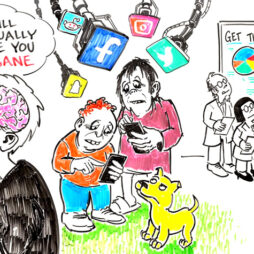 by Margaret Heffernan –
by Margaret Heffernan –
Like most everyone else, I worry about productivity. Since there aren’t more hours in the day, how can I get more done? That’s made me reflect on the truly productive people I’ve known or worked with throughout my career.
They all share certain characteristics:
1. They have a life.
Far from being the maniacally focused, late night or early morning types, truly creative innovators or problem solvers have a rich life outside of work. One of the finest CEOs I’ve known, Carol Vallone, founder of WebCT, coached her local softball team. She said it’s where she honed her leadership skills. It also meant she had to take her mind off work and think in different ways. No wonder academic research keeps showing that external commitments are highly correlated with high achievement.
2. They take breaks.
It’s easy to think that you’ll get more done if you never stop. But what’s clear from neuroscience is that we can easily get resource-depleted (tired) and can quickly become rigid and narrow minded (tunnel vision). In other words, we get stuck. Taking a break—just walking around for a minute—can reset and refresh your mind, allowing you to see solutions that another hour at the desk would not have revealed. It’s one reason we often have our best ideas driving home.
3. They’ve often worked in several different industries.
This means that they regularly challenge orthodoxies because they’ve seen different frameworks and approaches. They may not take so much for granted, and have the experience to see the value in re-framing problems.
4. They have great outside collaborators.
Sometimes these collaborators are formal, often not. But their sounding boards aren’t just immediate colleagues or clients. Their wide networks allow them to incorporate a wider range of thinking, contacts and information and they bring light and air into the business.
What all of these characteristics demonstrate is that truly productive people have very wide and rich peripheral vision: external commitments, time to breath, multiple perspectives, and contacts. These individuals bring far more to the table than their immediate task or job requires. They’re productive because they have such rich resources to call upon: science, music, art, literature, theatre, furniture design, pot plants—you name it. There is always much more to them than ever meets the eye. What this means is that the secret to productivity isn’t a new organizer, a piece of software, or a new app. It’s having a whole life.
HT: Inc.com


